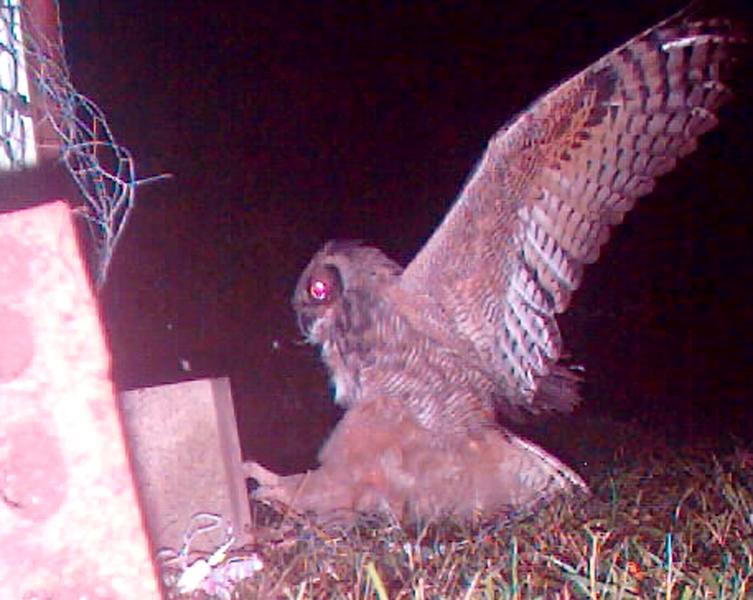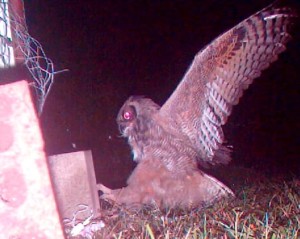Mystery murderer tells humbling hunting story
The crime scene was gruesome.
Blood and body parts were scattered throughout the yard. A leg was found laying under a small shrub, meat cleanly ripped off the bone.
If it weren’t for the clot-caked white feathers scattered in clumps throughout the carnage, it would be easy to assume that a much bigger animal than a chicken had been obliterated in my back yard.
Our daughters had received 12 baby chicks for Easter and had nurtured them safely into chicken-and-rooster adulthood. Part of the process involved moving them outside into a larger pen and allowing them to roam around the yard during the days.
For one hungry hawk, the temptation was just too much to bear. For the chicken, there was no chance for escape. It was as if someone had detonated a live grenade inside a down pillow.
After cleaning up the carnage and consoling our two mother hens, work began on a new pen that would give the 11 remaining chickens some room to roam without leaving them as sitting ducks for a bird of prey looking for an easy dinner.
Some chain-link panels, chicken wire, wooden pen and sheet metal roof later, and our birds were safely scratching up the ground looking for worms and other tasty treats.
Or so we thought.
The next morning, 11 had become 10. A dead chicken was found in the pen, its head and guts missing. The chickens themselves had cannibalized the carcass, but it was obvious something else had initiated the kill.
Mink? Weasel? Something else? As frustrated as I was to still be losing chickens after the extra work put into a pen that was supposed to protect them, my curiosity reigned supreme.
There was a mystery here that needed solved.
So I dug out the digital deer camera I had received for Christmas two years ago. I positioned it near the one part of the fence that seemed to have the biggest opening, figuring it was the best place for a blood-thirsty weasel or small raccoon to somehow squeeze into the pen.
Like any good trap, I needed bait. Our remaining 10 chickens provided that.
While I knew it meant the possibility of losing yet another bird, I had convinced myself the murderer wouldn’t strike in back-to-back nights or that if it did, the camera’s flash would scare it away.
I was wrong on both accounts. The next morning, there was another headless, gutless mound of bloody feathers inside the pen.
Angry at both the mystery animal and myself, I turned to check the camera and was surprised to find that it took 78 pictures during the night.
Finally, some evidence.
Uploading the pictures onto our trusty laptop, I couldn’t believe what it showed.
Frame after frame, a large owl scouts out the scene by walking with its head down. Then, suddenly, it flies directly into the chicken wire fencing and starts digging in its talons. As the attack continues, a few of the images show the owl grasping clawfuls and beakfuls of feathers and eventually flesh out of the fence.
The photos are all pretty interesting if you don’t factor in the frustration of knowing it was tearing apart one of the family’s extended pets. Our 6-year-old daughter seemed the most frustrated — vowing to find the owl and “punch it in the face” — a threat she originally had threatened for the hawk that feasted on chicken No. 1.
It can be so easy to feel the frustrations and want to act in an attempt to protect what you feel is yours. It’s like the gardener that uncases the .22 when a groundhog starts to eyeball his prized tomato bush or row of luscious, leafy green bean plants.
But there’s a lesson here, too. These animals are just doing what comes natural to them — what they need to do to survive. They forage for food on a daily basis, and if some easy pickings happen to become available because a few humans forget about the cycle of life of which we’re all a part — than why not take advantage?
Looking ahead to the annual rite of passage known as the Pennsylvania rifled deer season, I am reminded that the real hunters stalk our woods on a daily basis and aren’t governed by bag limits, wildlife management units or antler restrictions.
The real hunters don’t wear fluorescent orange, carry a .270 Winchester or have the option of hitting the local sub shop on the way home if they aren’t successful during the day’s hunt.
There is something very humbling about that.


